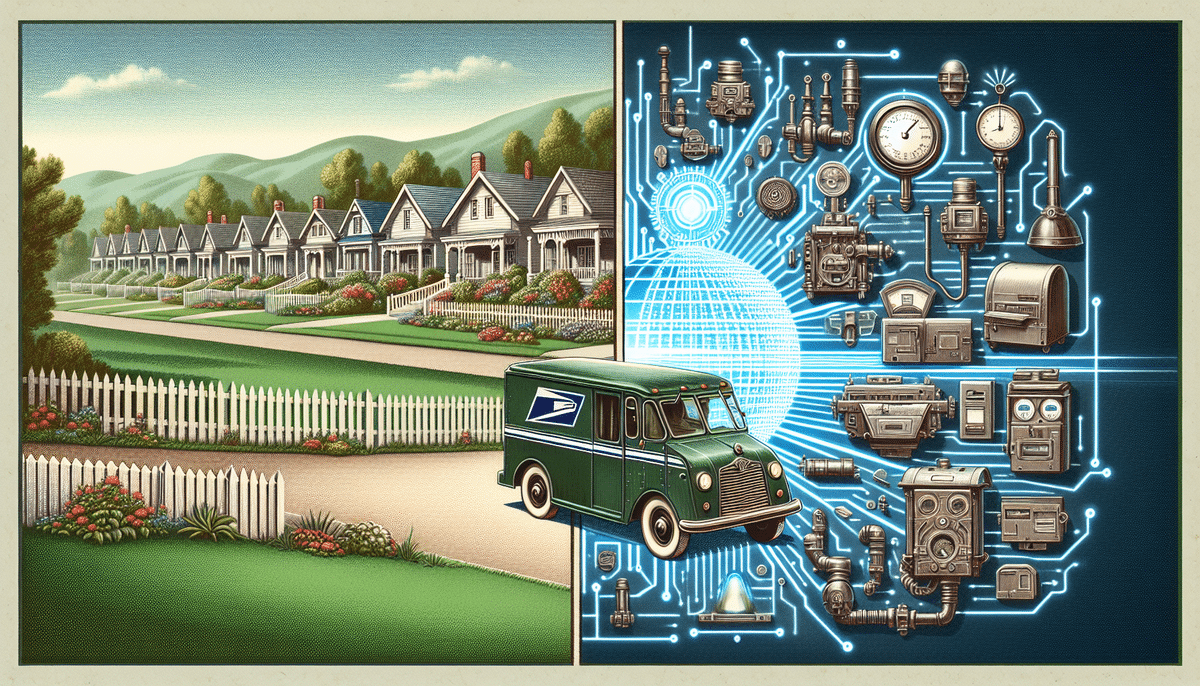Pitney Bowes vs USPS: Comprehensive Comparison for Your Shipping Needs
When it comes to shipping and mailing services in the United States, Pitney Bowes and USPS (United States Postal Service) are two prominent names. While both companies offer a range of services, understanding their differences is crucial for businesses and individuals alike. This article provides an in-depth analysis of Pitney Bowes and USPS, highlighting their strengths and potential drawbacks to help you make an informed decision.
Overview of Pitney Bowes
What is Pitney Bowes?
Pitney Bowes is a global technology company specializing in providing innovative mailing and shipping solutions to businesses of all sizes. Established in 1920, the company initially gained recognition for its postage meters and has since expanded its offerings to include advanced software for mail presorting, shipping optimization, and real-time package tracking.
Key Services Offered by Pitney Bowes
- Mail Presorting: Streamlines bulk mailing processes to reduce postage costs.
- Shipping and Tracking Software: Enhances package management with real-time tracking capabilities.
- International Shipping: Facilitates global deliveries through its Global E-commerce platform.
- Customized Business Solutions: Tailors shipping and mailing processes to meet specific business needs.
Overview of USPS
What is USPS?
The United States Postal Service (USPS) is an independent agency of the U.S. federal government responsible for providing postal service across the nation. With a history dating back to 1775, USPS is one of the oldest and most trusted postal services globally, handling millions of mail and package deliveries daily.
Key Services Offered by USPS
- First-Class Mail: Ideal for letters, postcards, and lightweight packages.
- Priority Mail: Provides faster delivery with tracking and insurance options.
- Priority Mail Express: Guarantees overnight delivery to most U.S. locations.
- International Shipping: Offers various international mailing options with tracking.
- Informed Delivery: Allows customers to preview incoming mail and packages online.
Comparative Analysis
Technology and Innovation
Pitney Bowes excels in offering advanced technology solutions tailored for businesses, including mail presorting and shipping optimization software. These tools help businesses reduce costs and improve efficiency. In contrast, USPS focuses more on traditional mail and package delivery services, though it has integrated digital tools like Informed Delivery to enhance customer experience.
Pricing Structures
Cost is a significant factor when choosing between Pitney Bowes and USPS. USPS offers a wide range of affordable shipping options, including flat-rate boxes and First-Class Mail for lightweight packages. According to the USPS Pricing Guide, services like Priority Mail Flat Rate boxes provide predictable shipping costs, which can be beneficial for budgeting.
Pitney Bowes, on the other hand, provides competitive rates for packages under a pound and offers scalable pricing for businesses with higher shipping volumes. Their Global E-commerce platform also provides cost-effective international shipping solutions.
Delivery Times
USPS is renowned for its reliable delivery times, especially with services like Priority Mail Express, which guarantees overnight delivery to most locations. Typically, First-Class Mail takes 1-3 business days within the U.S.
Pitney Bowes offers flexible delivery options ranging from 1-5 business days for domestic shipments, depending on the selected service. For international deliveries, Pitney Bowes provides a broader range of options, with delivery times between 2-14 days based on destination and service level.
Package Tracking and Monitoring
Both Pitney Bowes and USPS offer robust tracking systems. USPS provides tracking information through their website and mobile app, ensuring customers can monitor their packages in real-time. Additionally, USPS's Informed Delivery feature enhances tracking by allowing customers to see digital previews of incoming mail.
Pitney Bowes offers real-time tracking through its platform, supplemented by customizable email and SMS notifications. This feature is particularly beneficial for businesses that need constant updates on their shipments.
Customer Support and Service Reliability
USPS boasts a large customer service team with extensive resources available both online and through local post offices. Their services are highly reliable, backed by over two centuries of operation and government oversight.
Pitney Bowes provides specialized customer support focused on their technology and shipping solutions. While their support team is smaller, they offer in-depth technical assistance tailored to business needs.
Environmental Impact and Sustainability
Eco-Friendly Initiatives
Both Pitney Bowes and USPS have made strides towards reducing their environmental footprints. USPS has implemented green initiatives such as using electric delivery vehicles and promoting paperless options. According to USPS's Environmental Efforts page, these measures aim to decrease carbon emissions and promote sustainability.
Pitney Bowes focuses on sustainability through energy-efficient products and low-waste shipping materials. Their commitment to environmental responsibility is reflected in their corporate sustainability reports, which outline goals for reducing environmental impact.
Alternatives to Pitney Bowes and USPS
Other Shipping Providers
While Pitney Bowes and USPS are leading options, several other companies offer competitive mailing and shipping services:
- FedEx: Known for its fast and reliable express shipping services.
- UPS: Offers a wide range of shipping options with robust tracking.
- DHL: Specializes in international shipping with extensive global coverage.
The choice among these alternatives depends on specific needs such as delivery speed, international reach, and specialized services.
Tips for Choosing Between Pitney Bowes and USPS
Assess Your Shipping Needs
- Volume: High-volume businesses may benefit from Pitney Bowes' bulk mailing solutions and discounted rates.
- Delivery Speed: For overnight or expedited shipping, USPS's Priority Mail Express is ideal.
- International Shipping: Evaluate the range of international services and delivery times offered by both providers.
- Technology Integration: Businesses requiring advanced tracking and shipping optimization software may prefer Pitney Bowes.
Compare Costs and Services
Use the pricing calculators available on the USPS website and Pitney Bowes' platform to estimate shipping costs based on package size, weight, and destination. Consider any additional fees for services like insurance, tracking, and expedited delivery.
Conclusion: Choosing the Right Partner for Your Shipping Needs
Both Pitney Bowes and USPS offer reliable shipping and mailing services, each with its unique advantages. Pitney Bowes is ideal for businesses seeking advanced technological solutions and customized shipping options, especially for international deliveries. In contrast, USPS provides cost-effective and dependable services with a broad domestic and international reach, backed by years of trusted service.
Ultimately, the best choice depends on your specific requirements, including shipment volume, delivery speed, budget, and the need for technological integrations. Assessing these factors will help you select the service that best aligns with your shipping objectives.






















